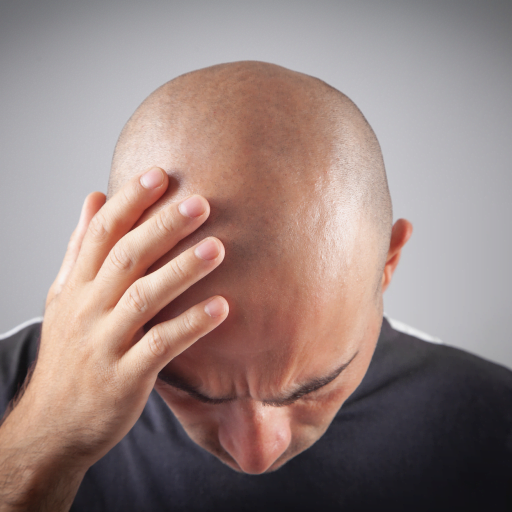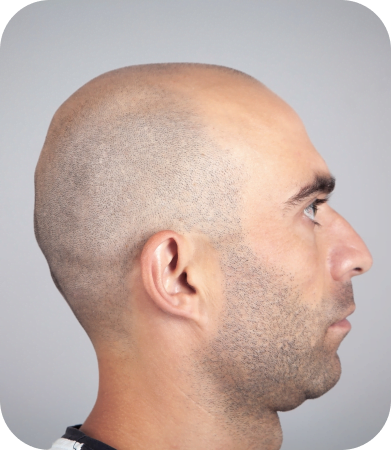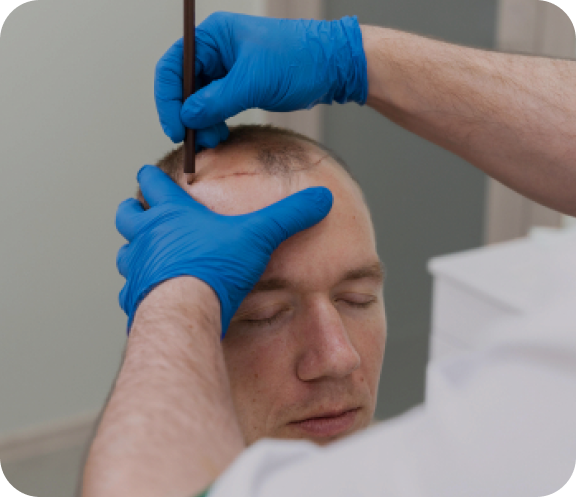What Causes Male Pattern Baldness?
Male pattern baldness (MPB) is a condition that affects men in which the hairline recedes. Eventually, the thinning of hair on top of the head can lead to complete baldness.
Male pattern baldness is due to sensitivity in the blood for male sex hormones such as testosterone. Continued hormone exposure can cause shrinkage of hair follicles in certain areas of the scalp. Thus, it can lead to permanent closure and prevent new hair growth from taking place.
Aside from hormones, men suffer from male pattern baldness because of age and genes. The genetic factor contributes to the gradual shrinkage of the tiny cavities in the skin at the base of hairs. When this happens, the hair will grow progressively shorter and finer until no new hairs grow.
Based on the age and genetic makeup of white men, they tend to develop some degree of male pattern baldness. Having said that, it affects up to half of all white men by the age of 50 years. Moreover, up to 80% of men in the same group suffer from baldness by the age of 70 years. When men in their first- and second-degree relatives suffer from hair loss, then you have a high chance of losing hair too.
What Is Dihydrotestosterone?
Male pattern baldness is caused by excess dihydrotestosterone (DHT), a byproduct of testosterone. It blocks the conversion of testosterone into dihydrotestosterone. Thus, it can cause hair follicles to shrink.
Dihydrotestosterone falls under the class of male sex hormones (androgens). These androgens perform many functions. The main job of these male sex hormones is regulating hair growth. In the case that you have excess androgens, it can cause more hair to grow on your body. This is the reason why some men have hair on their faces and body. However, it can also be the root cause of why your hair falls out on the head.
How Does DHT Cause Male Pattern Baldness?
Typically, the lasting impact of hair loss occurs because of the shrinkage of hair follicles. Oftentimes, this happens due to a sensitivity to dihydrotestosterone. If that is the case, MPB occurs because men inherit hair follicles that are sensitive to DHT. Thus, DHT makes them shrink over time.
As the shrinkage occurs, hair follicles produce fewer hairs. Contrary to what you know, a single hair follicle does not produce one hair. Instead, most hair follicles produce many hairs. In fact, it can produce as many as five hairs in one follicle.
When the DHT-sensitive follicles produce fewer hairs, then that scalp area appears to be thinning out. Eventually, these hair follicles may only produce thinner, shorter, or finer hair. Or, they will entirely stop producing hair.
Again, every MPB case is different from another. Most men begin to experience this type of hair loss with a thinning spot at the crown of their heads. In these areas, it is believed that it contains DHT-sensitive follicles. That is why it is most often affected by male pattern baldness.
Over time, most men are left with the classic “horseshoe” pattern. Although, some men experience hair loss on the back and sides of the head as well.
Have you seen a distinctive “M” shape in your receding hairline? This is a big sign that you are experiencing male pattern baldness. Not to mention the thinning hair at the crown of your head. However, you do not know what causes your hair loss.
Ultimately, the best way to identify the root cause of male pattern baldness is to consult a hair loss specialist. At the Hair Transplant Center – New Jersey, we will consult with you about the cause of your problem. Moreover, we will identify whether you can expect your hair to regrow on its own.
Yet, if natural hair regrowth is not an option, we’ll discuss what hair restoration treatment is right for you. If you have any questions or want to set up a free consultation, contact us today!
Can I Stop My Male Pattern Baldness?
Whether it is a receding hairline, a bald spot, or thinning hair, it often strikes a major blow to your self-esteem. However, it is not a disease or condition. Thus, it can be treated by talking to your doctor about hair loss treatments, including medication for male pattern baldness.
With male pattern baldness, there is something you can do to reverse or stop your hair loss problem. The Hair Transplant Center – New Jersey surgeons are here to help you. We are proud to be the top choice for pro athletes, celebrities, and actors.
So, when you are experiencing male pattern baldness, do not be depressed. It does not mean that you need to have a giant collection of hats to hide your hair loss problem. Today, there are many effective hair restoration treatments available. This includes:
- Hair transplants.
- Oral medication.
- Topical creams.
Before anything else, it is important to understand what androgenic alopecia is. Also, you must know why it is different from other forms of hair loss. When you understand this, then you can start looking for a solution to your unique situation.



